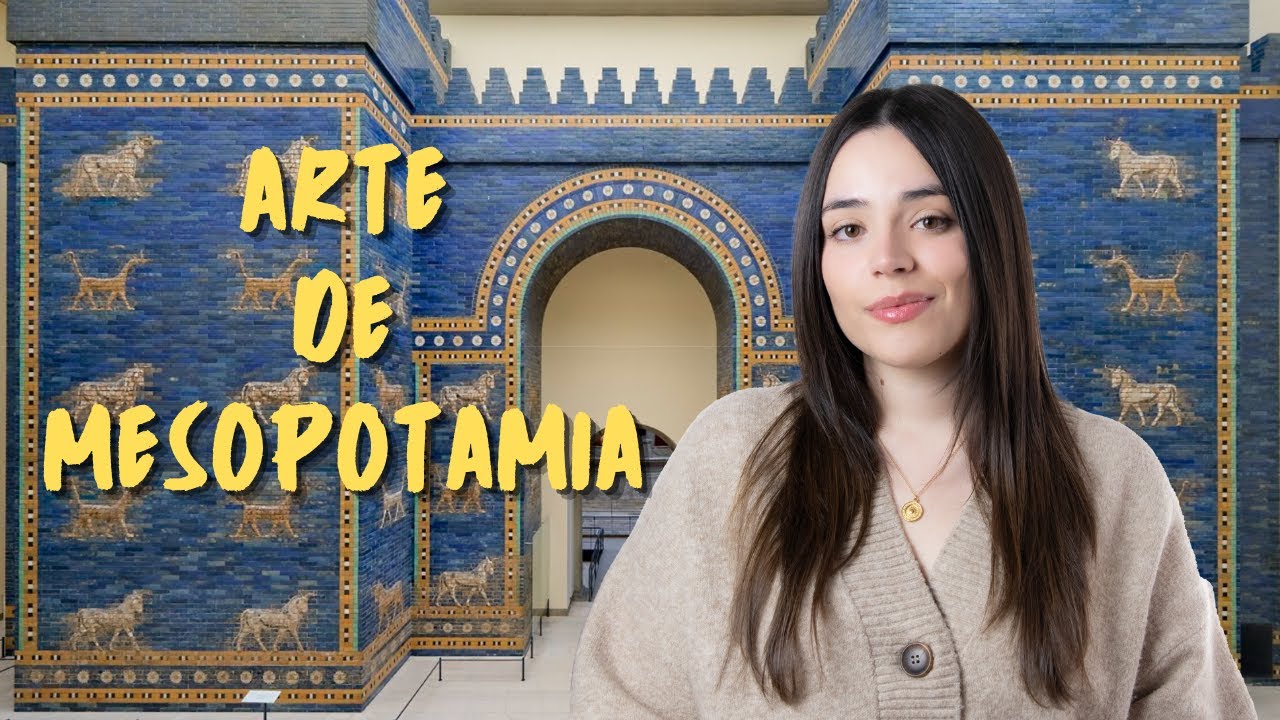HISTÓRIA GERAL #1 MESOPOTÂMIA: (FORMAÇÃO, POLÍTICA E ECONOMIA)
Summary
TLDRThis educational video script delves into the history and formation of Mesopotamian societies, exploring their geographical context in the Middle East, between the Tigris and Euphrates rivers. It highlights the transition from pre-history to history with the advent of writing, around 4000 BCE. The script discusses the Sumerians, Assyrians, and Babylonians, emphasizing their contributions to a diverse yet interconnected culture. It outlines the 'Asiatic mode of production,' characterized by centralized power in city-states, and mentions Hammurabi's code of laws. The importance of agriculture, trade, and the development of dikes for protection and irrigation are also covered, showcasing the region's economic and social organization.
Takeaways
- 🌍 The Mesopotamia region, located between the Tigris and Euphrates rivers, is a significant area for the development of early civilizations due to its fertile land and access to water.
- 🏙️ Mesopotamian societies were organized into city-states, which were independent yet could belong to the same ethnic group, leading to a complex political landscape.
- 📜 The invention of writing in Mesopotamia marked a pivotal shift from pre-history to history, allowing for the recording and preservation of societal organization and culture.
- 👑 Power in Mesopotamian city-states was often centralized in the hands of leaders or priests, characterizing what is known as the Asiatic mode of production.
- 💼 The economy of Mesopotamia was heavily reliant on agriculture, with the cultivation of crops like wheat and barley, and the rearing of domesticated animals.
- 🛠️ Early tools were rudimentary, made from stone and wood, but as the Bronze Age began, more durable metal tools emerged, facilitating societal development.
- 🛣️ Trade in Mesopotamia initially involved the barter of goods like grains and later expanded to include metals, with the concept of currency emerging around 1500 BCE.
- 🚧 The construction of dikes was crucial for Mesopotamian society, serving to protect cities from river floods and to irrigate fields, highlighting the importance of engineering and maintenance.
- ⚖️ The Code of Hammurabi, one of the earliest known legal codes, was created to define laws and societal norms, embodying the principle of proportional punishment for crimes.
- 🌾 Agriculture was the foundation of Mesopotamian society, with the control and distribution of land and resources being determined by the ruling class or religious authorities.
- 🌿 The development of Mesopotamian society was intertwined with the management of natural resources, particularly water from the rivers, which was harnessed for both protection and irrigation.
Q & A
What is the geographical context of Mesopotamia?
-Mesopotamia is located in what is today called the Middle East, in Asia, and is a region often referred to as the 'cradle of civilization' due to its historical significance.
Why is the region between the Tigris and Euphrates rivers significant in the development of Mesopotamian society?
-The region between the Tigris and Euphrates rivers is significant because it provided a fertile area for agriculture, which was essential for the development of settled societies.
What is the main mode of production in Mesopotamia according to the script?
-The main mode of production in Mesopotamia was the 'Asiatic mode of production,' characterized by centralized power in the hands of city-state leaders or religious figures.
What were the primary ethnic groups that inhabited Mesopotamia?
-The primary ethnic groups in Mesopotamia were the Sumerians, Assyrians, and Babylonians, each contributing to the diverse cultural landscape of the region.
How did the invention of writing contribute to the transition from pre-history to history in Mesopotamia?
-The invention of writing allowed societies to organize and document their activities, laws, and transactions, marking the transition from pre-history, where oral traditions prevailed, to recorded history.
What is the significance of the Code of Hammurabi in the context of Mesopotamian history?
-The Code of Hammurabi is significant as it represents one of the earliest and most comprehensive legal codes, providing insight into the social structure, laws, and governance of ancient Babylon.
What was the basis of the economy in Mesopotamia, as described in the script?
-The economy of Mesopotamia was primarily based on agriculture, with a focus on crops like wheat and barley, and also involved animal husbandry and trade.
How did the development of dikes contribute to the survival and prosperity of Mesopotamian society?
-Dikes were crucial for protecting cities from river floods and for irrigation purposes, allowing for a stable agricultural output and thus contributing to the society's survival and prosperity.
What role did trade play in the development of Mesopotamian society?
-Trade played a significant role in the development of Mesopotamian society by facilitating the exchange of goods, ideas, and technologies, which in turn contributed to the region's economic and cultural growth.
What was the significance of the arado (plow) in the transition from a nomadic to a sedentary lifestyle in Mesopotamia?
-The arado (plow) was significant as it represented a technological advancement that allowed for more efficient farming, thus enabling the transition to a sedentary lifestyle and the development of more complex societies.
How did the Mesopotamian society organize its cities and what was the concept of a 'city-state'?
-Mesopotamian society organized its cities as independent city-states, which were self-governing entities with their own leaders. Multiple city-states could belong to the same ethnic group but did not necessarily form a single nation.
Outlines

Cette section est réservée aux utilisateurs payants. Améliorez votre compte pour accéder à cette section.
Améliorer maintenantMindmap

Cette section est réservée aux utilisateurs payants. Améliorez votre compte pour accéder à cette section.
Améliorer maintenantKeywords

Cette section est réservée aux utilisateurs payants. Améliorez votre compte pour accéder à cette section.
Améliorer maintenantHighlights

Cette section est réservée aux utilisateurs payants. Améliorez votre compte pour accéder à cette section.
Améliorer maintenantTranscripts

Cette section est réservée aux utilisateurs payants. Améliorez votre compte pour accéder à cette section.
Améliorer maintenantVoir Plus de Vidéos Connexes
5.0 / 5 (0 votes)






